
You'd never know that this light, fluffy, and moist cake is gluten-free! When I discovered I had to eat a gluten-free diet, I started developing baked goods. My mission was to not only make things that were delicious and that I would love to eat, but treats my friends and family, who were not gluten-free, would also enjoy (and sometimes not even realize were gluten-free!). I set the bar high because I found that many gluten-free baked goods were gummy, sticky, and didn't have a good flavor. See below to find out how I developed the recipe to ensure great results! Be sure to follow the steps one right after the other so that the cake is a success; this will take you through Sarah's Gluten-Free Mixing Methods that I developed.
CAKE RECIPE HELP / GLUTEN-FREE RECIPE HELP
INGREDIENTS
1/3 cup sifted Bob's Red Mill All-Purpose Gluten-Free Baking Flour; (SARAH SAYS: to measure flour for this recipe, sift cake flour into measuring cup and level to top*)
3 tablespoons cornstarch
1/2 teaspoon xanthan gum
1/4 teaspoon salt
2 large eggs
3 large egg yolks
2 large egg whites
1/2 cup plus 1 tablespoon sugar or superfine sugar
1 tablespoon pure vanilla extract
1/4 teaspoon orange oil or 2 teaspoons orange peel, finely minced (finely grated or chopped)
1/4 teaspoon cream of tartar
*NOTES:
How to measure 1/3 cup sifted gluten-free all-purpose flour:
1. Place a piece of waxed paper on the counter with the measuring cup on top.
2. Sift the flour into the 1/3 cup measuring cup.
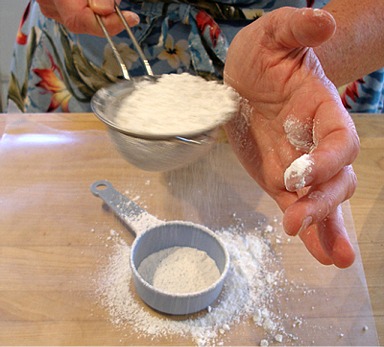
3. Level off the flour evenly to the rim of the measuring cup with a knife.
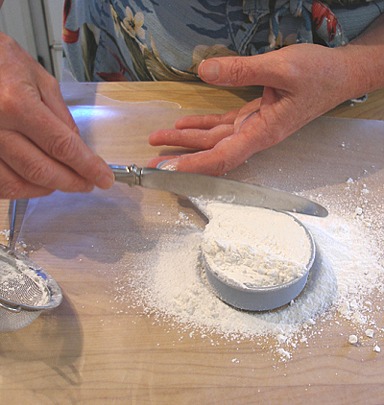
4. Place excess flour back into the cake flour container.
How to separate eggs:
When I separate the whites from yolks, I find it easier just to do this with clean hands, rather than using an egg separator.
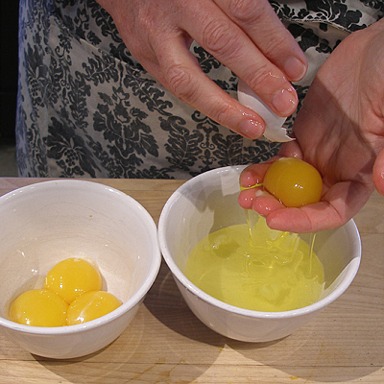
SUGGESTED EQUIPMENT:
One 17 x 12-inch jelly-roll pan
One large, clean smooth kitchen towel. Do not use terry cloth or anything else with texture.
INSTRUCTIONS
1. Prepare the baking pan and preheat the oven:
A. Position the oven rack in the lower third of the oven. Preheat the oven to 450 degrees F.
The oven must be VERY hot.
B. Prepare, one 17 x 12-inch jelly-roll pan: grease and line with parchment paper or a nonstick liner.
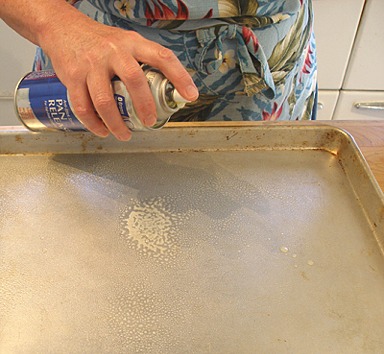
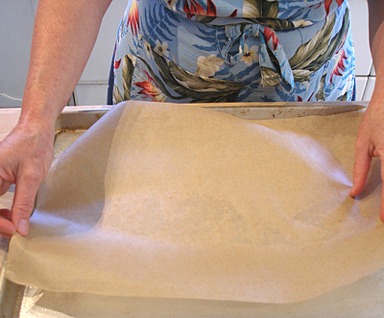
2. Mix the flour, cornstarch, xanthan gum and salt:
A. In a small bowl, place the cake flour.
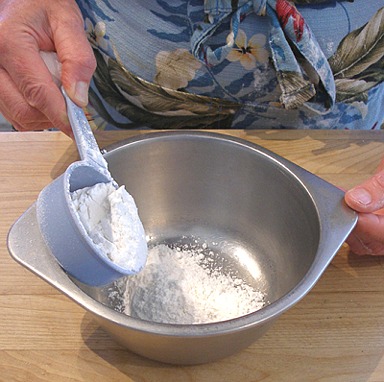
B. Add the cornstarch, xantham gum and salt to the flour and stir to combine. Set aside.
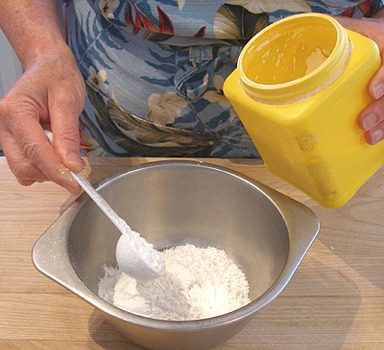
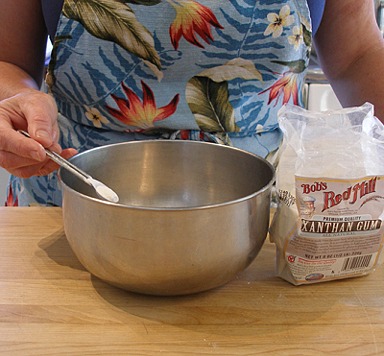
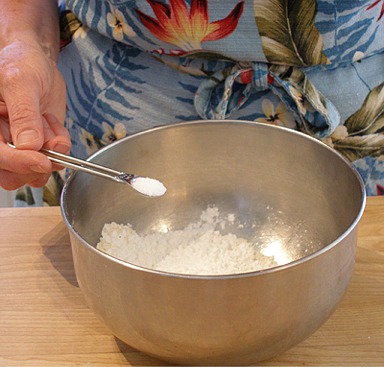
3. Beat the eggs and yolks together with sugar for a total of 5 minutes or until the mixture becomes thick, fluffy, and triples in volume:
SARAH SAYS: This is a VERY important step.
A. Fit the stand mixer with a paddle attachment. Do NOT use a whisk attachment.
Place 2 large eggs and 3 yolks (2 yolks from 2 large eggs, separated, plus 1 large yolk) in a mixing bowl of a stand mixer.
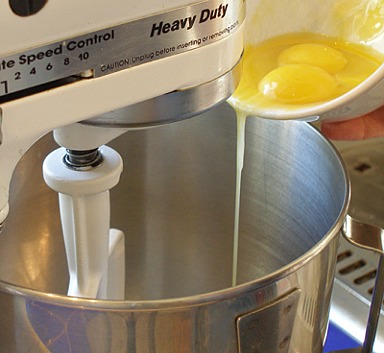
B. Add the 1/2 cup sugar.
SARAH SAYS: Do not let the sugar sit on top of unbeaten egg yolks for any length of time.
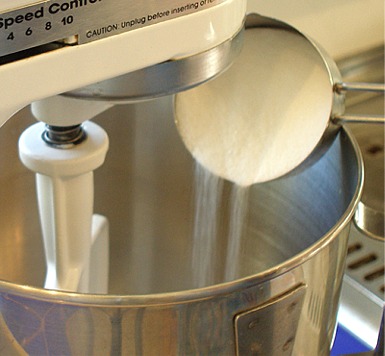
C. Beat the egg mixture on high speed for a total of 5 minutes or until it becomes thick, fluffy, and triples in volume:
SARAH SAYS: If your egg mixture does NOT achieve this, make a sweet omelet with it, and start again with new!
Here's how:
a. Start the mixer on low for a few seconds and then adjust it to high speed. Beat for one minute.
The mixture will start to look bubbly.
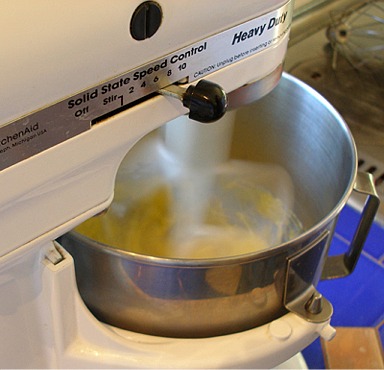
b. Stop the mixer. Scrape the side and bottom of the bowl without squashing the egg foam.
Be gentle.
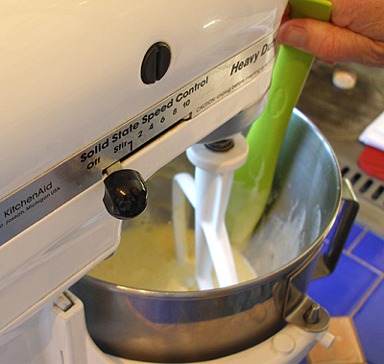
c. Add the vanilla and orange oil to the beaten egg mixture.
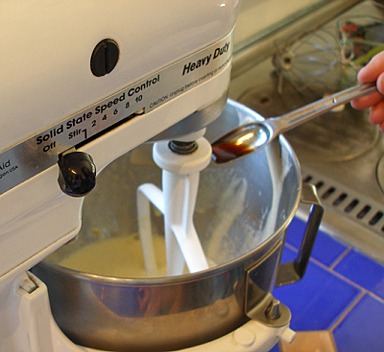
d. Resume beating on high for 3 or 4 additional minutes, or until thick, fluffy, and triples in volume.
You will have beaten the egg mixture for a total of 5 minutes.
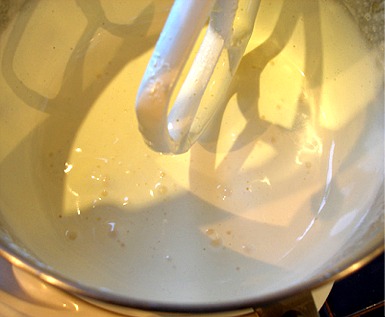
4. Sift the flour mixture over the beaten egg mixture, and beat on high seconds.
a. Stop the mixer and sift the flour mixture at once over the beaten egg mixture.
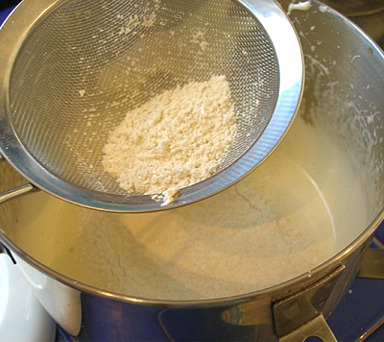
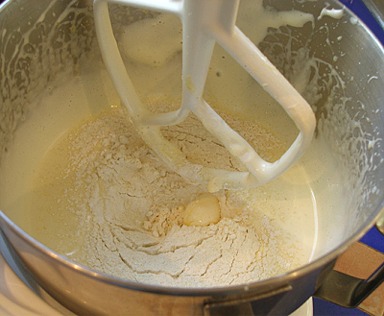
b. THIS IS ONE OF THE MOST IMPORTANT STEPS! Beat on high for 30 to 45 seconds, ONLY
You will see strands of web-like batter coming from the mixer blade from the batter in the mixture. The mixture will be shiny, thickened and sticky.
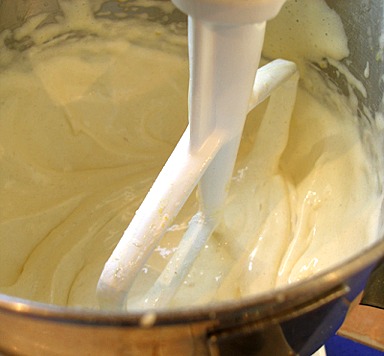
c. Set aside just long enough to beat the egg whites.
5. Immediately beat the egg whites until stiff peaks form:
SARAH SAYS: I recommend using a hand-held electric mixer or a wire whisk for this step since you will be beating 2 egg whites and you
want the beaters to fully reach them.
A. In a medium size deep bowl, with straight sides, beat the egg whites (2 large egg whites from 2 large eggs, separated) on low until foamy.
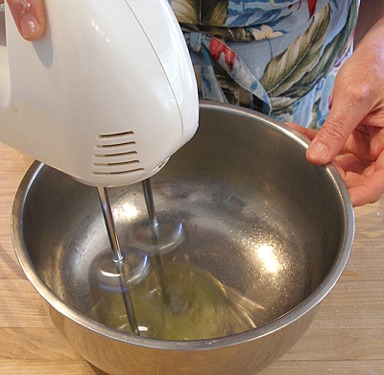
B. Add the cream of tartar.
Increase the mixer speed to high and beat until soft peaks form when the beater is raised.
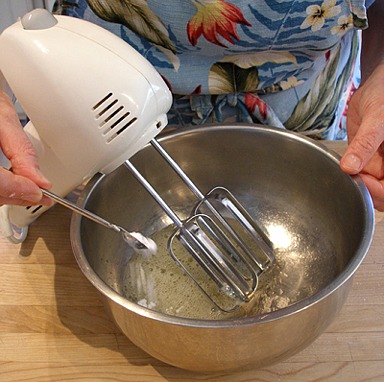
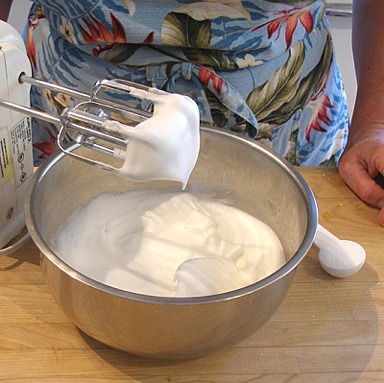
C. Add the remaining 1 tablespoon sugar.
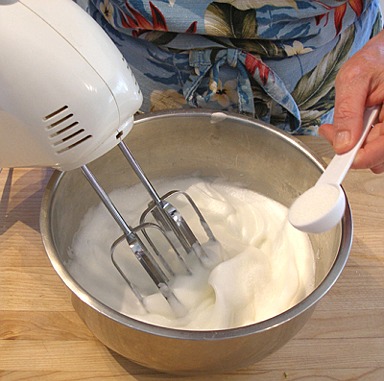
D. Continue to beat on high until stiff peaks form when the beater is raised.
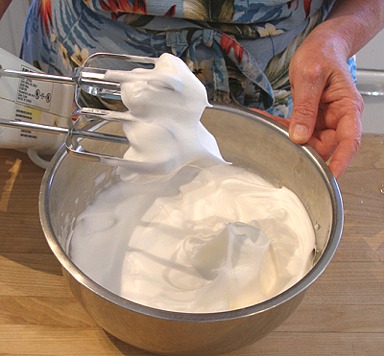
6. Right after beating, fold the egg whites in the egg/flour mixture, until all the whites have been incorporated:
A. Using a large rubber spatula, add 1/3 of whites to the egg/flour mixture and fold it in.
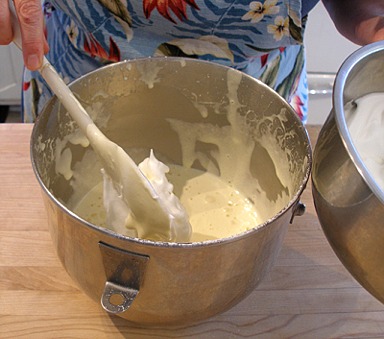
B. Add in the remaining egg whites and fold in, until all are incorporated.
SARAH SAYS: No smashing the air bubbles!
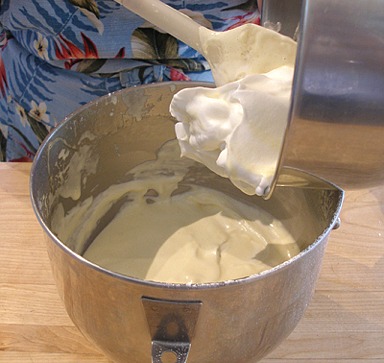
C. Not done, yet! You do not want to see any egg white streaks.
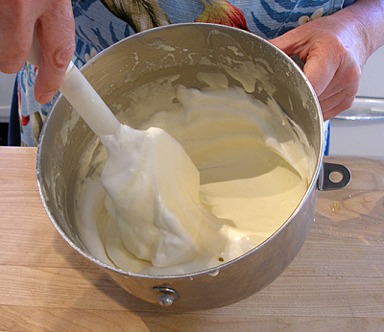
7. Fill the prepared pan with batter and bake the cake for 7 – 10 minutes or until golden brown:
A. Carefully scoop the batter into the prepared sheet pan. The mixture will not be runny; it will be thick and sticky and will not flow easily.
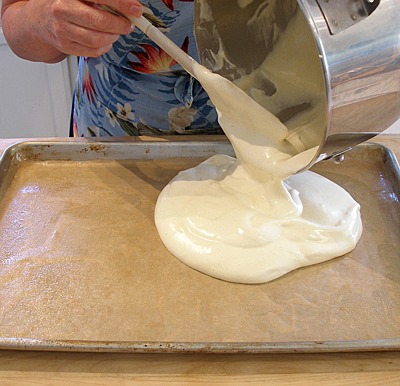
B. Use an angled metal spatula to spread the batter in the pan and level it.
Do NOT press down and smash any air bubbles in the batter. Push the batter to help it spread.
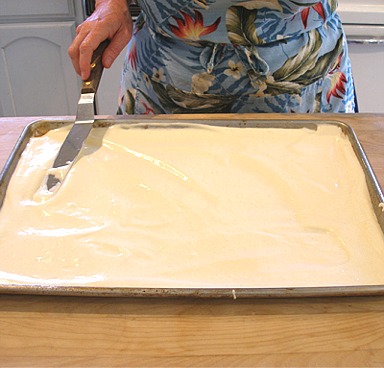
C. Immediately bake the cake for 7 – 10 minutes, or until golden brown.
A wooden cake tester, inserted in a few places, should come out clean.
The cake should be springy to the touch. You should hear a few air bubbles popping.
D. When the cake is done baking, immediately loosen the edges with a small metal spatula or sharp knife.
Make sure you go all around the cake. DO NOT SKIP THIS STEP!!
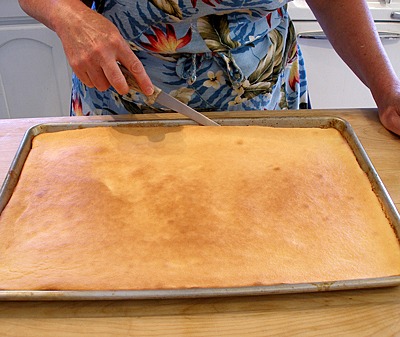
8. Roll the unfilled cake with a smooth kitchen towel, as soon as it comes from the oven while still hot. Then, let cool on a wire cake rack:
SARAH SAYS: NOTE – With this cake, all I do is flip the cake onto a clean piece of parchment paper, carefully remove the parchment paper from the bottom of the baked cake and roll it up
in the clean parchment paper sheet. I set the cake on a wire cake rack to cool.
I do not need to use a kitchen towel sprinkled with powdered sugar.
But, just in case, you may want to follow the instructions A and B, below.
A. Unmold the cake:
a. To prevent the cake from sticking, lay the kitchen towel and the countertop and lightly dust with powdered sugar.
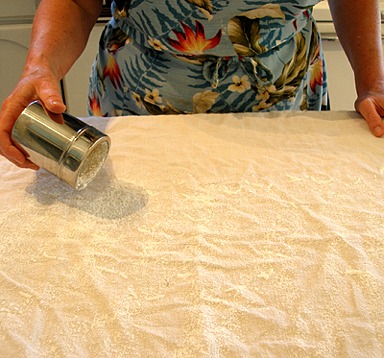
b. Then, rub the powdered sugar into the towel so it won't be messy when you flip it over.
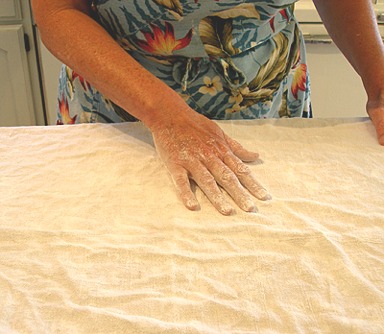
c. Place the powdered sugar rubbed, smooth kitchen towel on top of the hot, loosened cake.
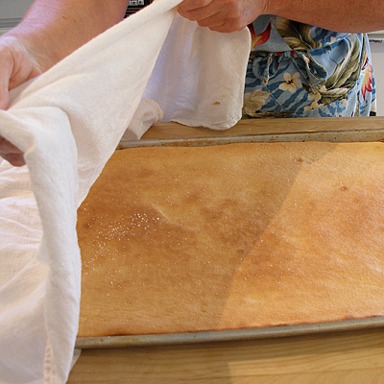
d. Place another sheet pan on top of the towel, flat side down.
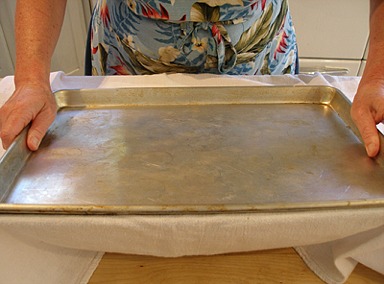
e. Flip both pans over at the same time, and the cake will unmold onto the smooth kitchen towel rubbed with powdered sugar.
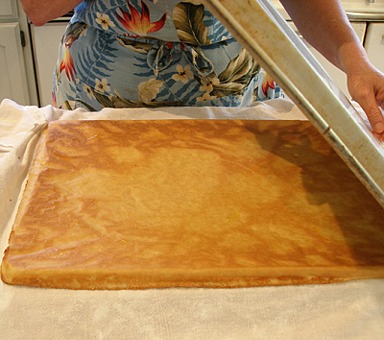
f. Remove the top cake pan and set aside.
While holding one end of the towel rubbed with powdered sugar, slide the bottom sheet pan out from under both the towel and cake,
keeping the cake on the towel rubbed with powdered sugar.
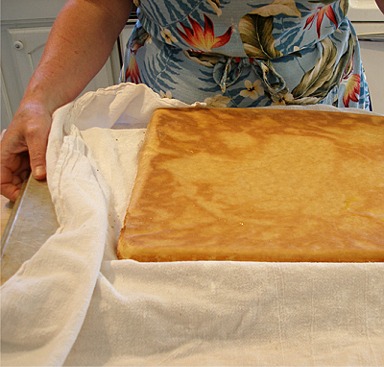
g. Starting at one end of the cake, carefully peel off the parchment paper from the bottom of the cake, which is now facing up.
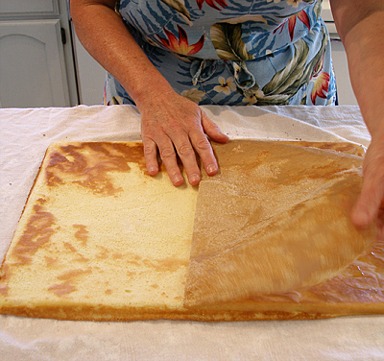
B. Roll the cake up tightly, towel and all:
SARAH SAYS: Start rolling at the long end.
Question: What is the long end? I am so confused?
Answer: Here's how I think of it. When you look at a rug on the floor, the narrow ends are usually the ones with the fringe on it. The long ends are the sides of the rug.
a. With the cake still on the kitchen towel, fold the edge of the towel onto the top of the cake. Gently begin rolling the cake under.
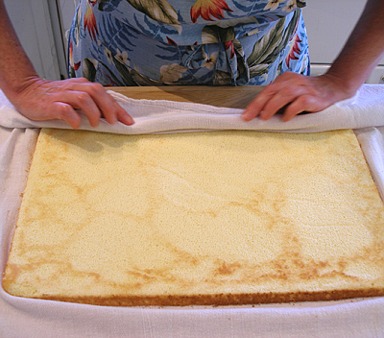
b. Once you get the initial edge of the cake rolled, continue rolling to the other edge of the towel.
Make sure you keep even pressure and roll the cake tightly, but do not force it or press on the cake in any one place.
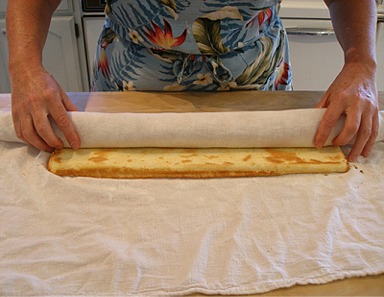
c. Cool the rolled cake, as is, on a wire cake rack.
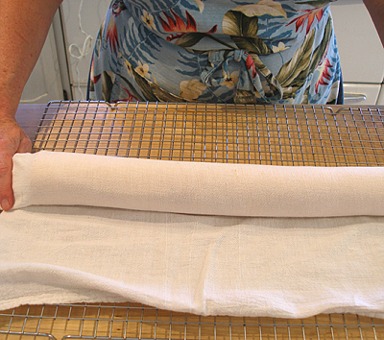
STORAGE
Do NOT refrigerate the unfilled cake.
It can be stored at room temperature, rolled as is, and wrapped in plastic wrap for day or two.
Freeze as is, wrapped in plastic, for a month or more. Thaw at room temperature


